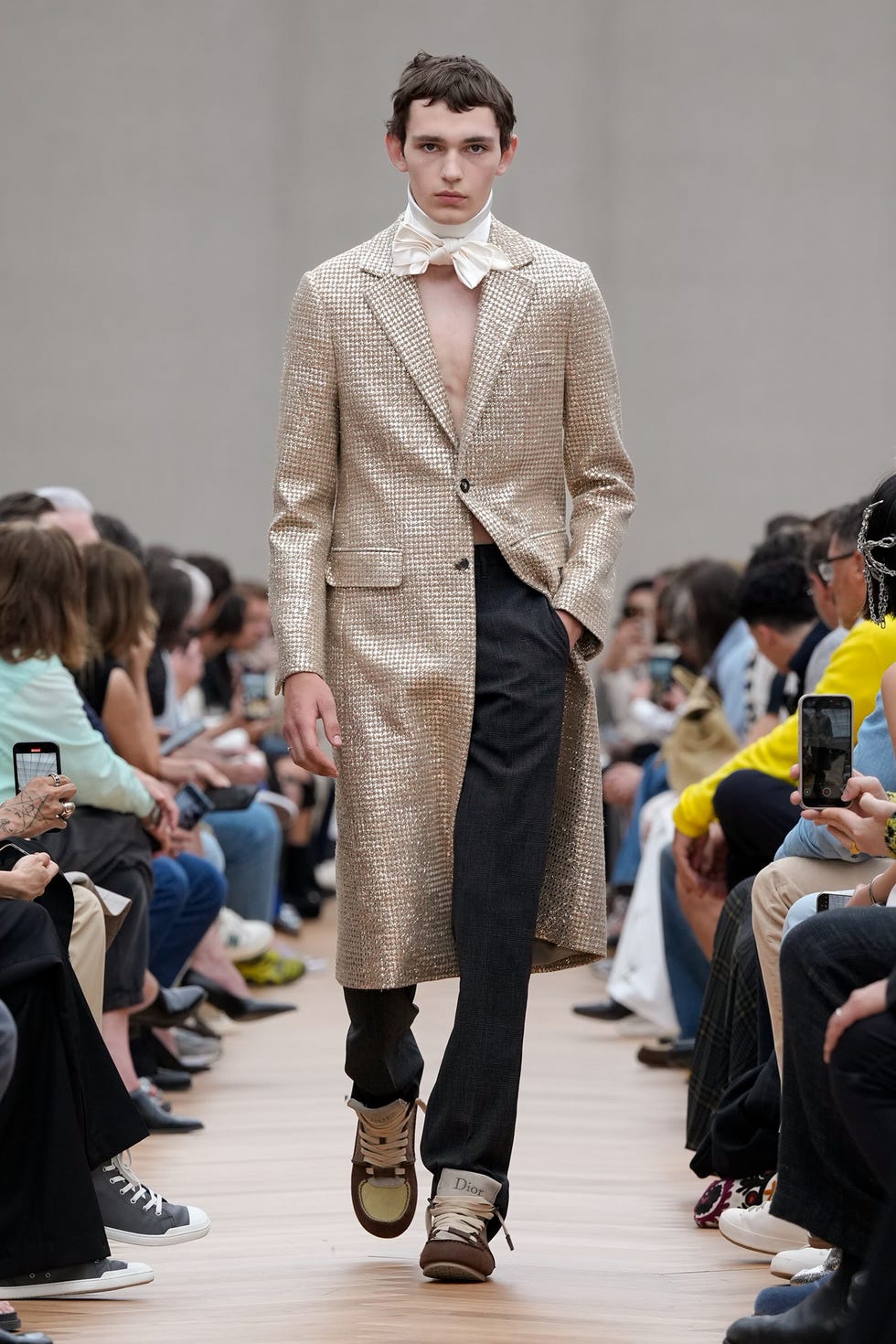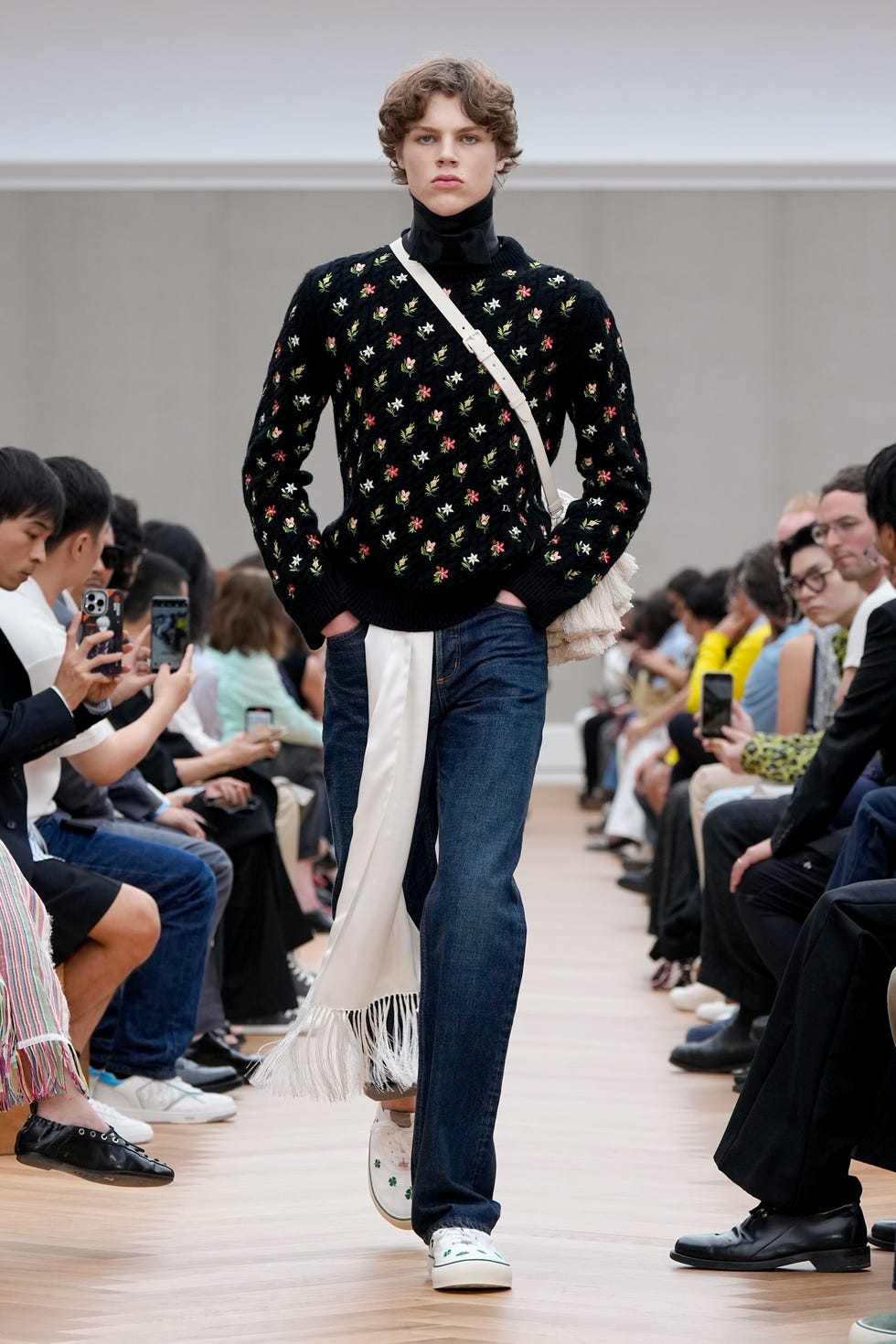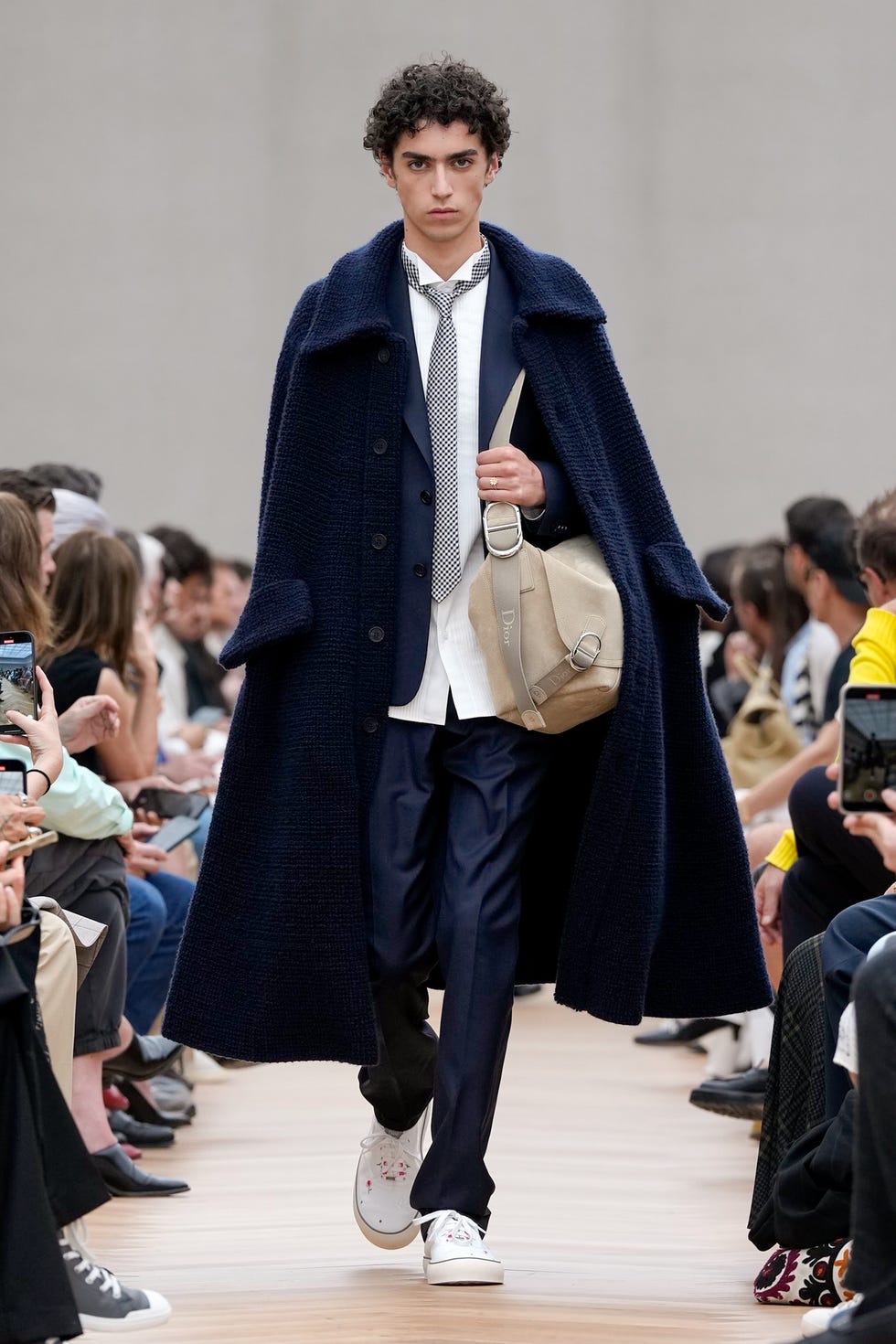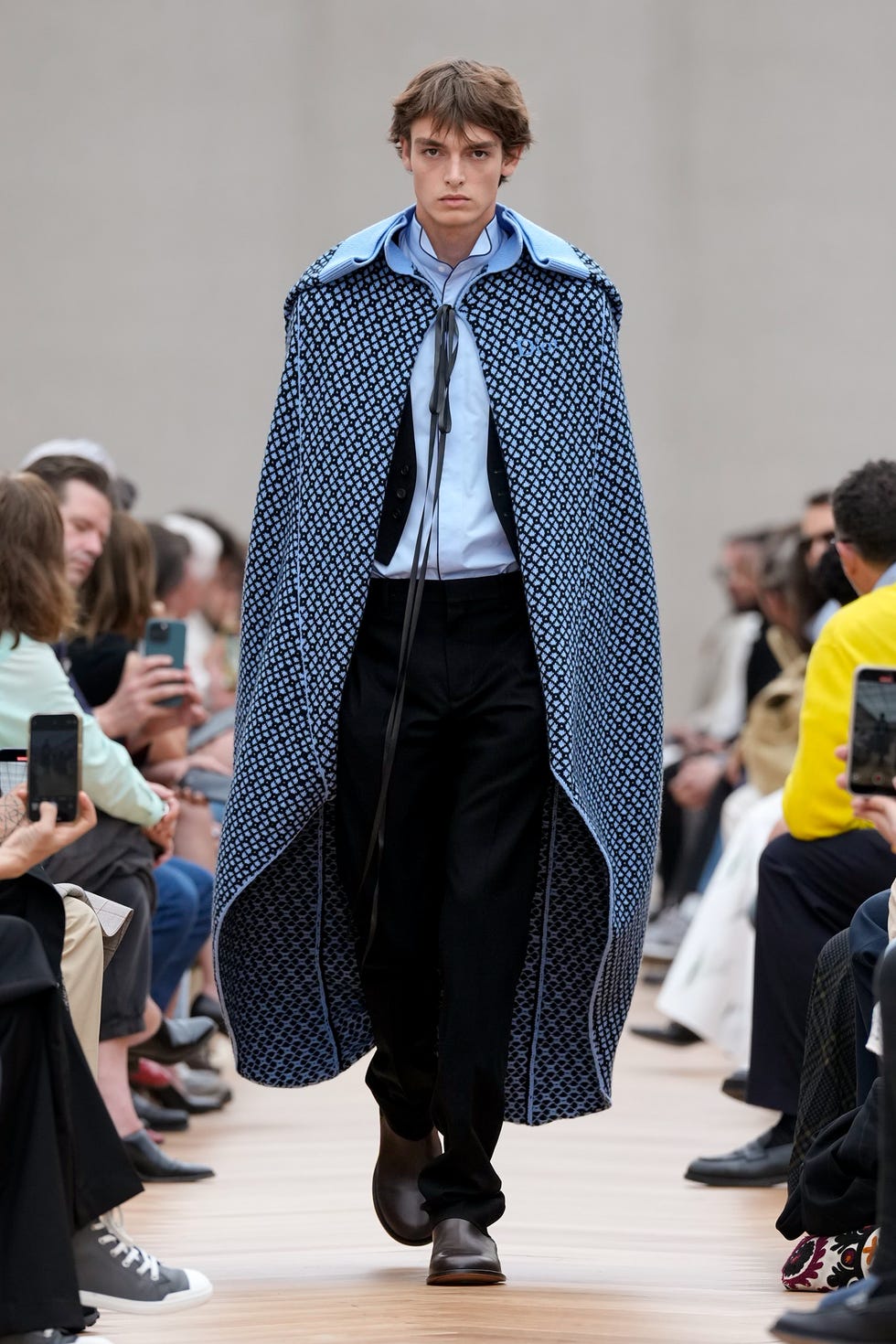Night fell over Paris like a velvet curtain, heavy and deliberate, as the Musée de l’Homme transformed into a stark and spectral theatre for what would become more than just a fashion show. This was a declaration. A thesis. Jonathan Anderson’s debut for Dior Men’s Spring 2026 was a calculated disruption—intelligent, provocative, and entirely unwilling to play by the rules of heritage or hype. This wasn’t Dior as we knew it. This was Dior reprogrammed, re-engineered, and reimagined.
Taking the reins from Kim Jones—a designer who spent the past half-decade rebranding Dior Men as a powerhouse of pop luxury and technical virtuosity—Anderson walked into a legacy brimming with expectations. But rather than conform, he subverted. With razor-sharp precision, he dismantled the codes, exposing the architecture beneath the aesthetics. There were no overt homages, no cloying nods to house archives. Instead, there was rebellion with polish. A quiet riot dressed in silk, mesh, and memory.
The first look said everything without saying anything. A coat with sculptural folds that hinted at corsetry, but with the severity of industrial tailoring. Sleeves that fell with the limpness of resignation, and yet held the poise of sculpture. This collection wasn’t about wearing clothes. It was about wearing questions. Where does softness end and power begin? What does structure mean in a collapsing world? Is masculinity still a silhouette, or just a suggestion?
The palette was spectral—bone, ash, faded ink, the pale pink of bruised ego. Materials whispered rather than screamed. Semi-sheer organza layered over raw denim, matte rubber trimmed in hand-embroidered silk. It was romanticism set on fire and rebuilt as something entirely new. The craftsmanship was immaculate, but never ornamental. Everything had a reason. Every thread felt political.
Accessories pushed the conversation further. There were leather gauntlets reminiscent of armor but worn like jewelry. Bags that mimicked archival medical kits, reinterpreted as objets d’art. Shoes teetered between brutalist architecture and post-gender fantasy—part boot, part ballet flat, entirely unclassifiable. And the hats—wide-brimmed, almost monastic—clashed beautifully with futuristic eyewear that felt lifted from a dystopian runway to Mars.
What Anderson brought to Dior wasn’t just fashion. It was an ideology. A resistance to aesthetic complacency. In a market obsessed with nostalgia and safe commerciality, his vision felt like a form of protest. And yet, it was seductive. Wearable in ways that snuck up on you. A poet’s version of pragmatism. A scholar’s take on streetwear.
There was a distinct sense that Anderson wasn’t just dressing men—he was redefining what a man might be. These weren’t clothes for warriors or Wall Street wolves. These were clothes for thinkers, for feelers, for the undefinable in-between. The man who wears Dior in 2026 isn’t loud, but he is seen. He doesn’t conquer a room. He changes its temperature.
Under Anderson’s direction, Dior Men’s embraces a new era of masculinity—one defined by courage, fluidity, and freedom. It invites men to break free from rigid conventions and explore complexity, vulnerability, and strength all at once. The result is a collection that doesn’t just dress a man but empowers him to own his individuality unapologetically.
In the end, Anderson didn’t just present a collection. He opened a conversation. A new chapter for Dior Men that refuses to be summarized by silhouettes or sales reports. This is fashion as discourse, and Anderson is fluently bilingual—in commerce and concept, beauty and intellect. He offered no nostalgia, no certainty, no easy answers. Just clothing that felt like a challenge—and an invitation.
Photos courtesy of Dior


































No comments:
Post a Comment